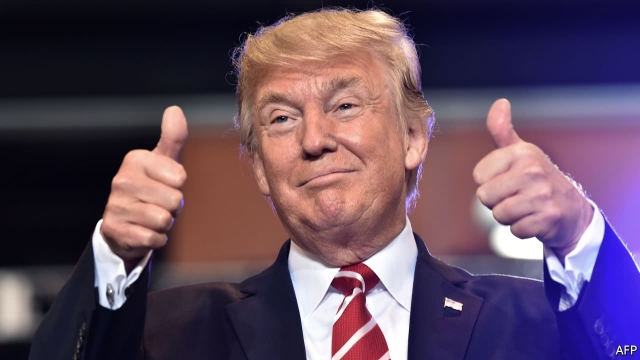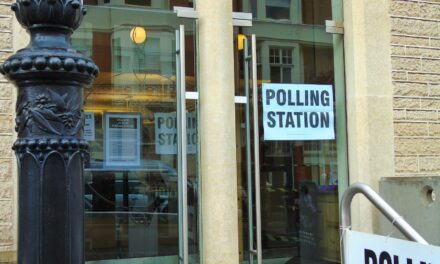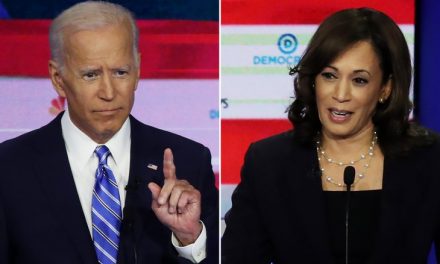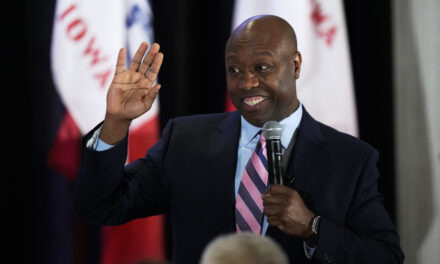Image Credits: AFP.
We like to talk about and distinguish between high-turnout elections and low-turnout elections. It’s an observable fact that more people vote when the presidency in on the line than when it is not. In recent cycles, this had an important predictive value about which party would have a better election night. When there is high turnout, it helps the Democrats and helps explain why President Obama was twice elected. When there is low turnout, as in 2010 and 2014, it favors the Republicans and helps explain why they gained a lot of seats in those midterm elections. None of this is controversial.
However, there’s something else that needs to be explained. Why, for example, did three and half million fewer people turn out to vote for president in 2012 than had done so in 2008 despite the fact that voting age population was larger in the latter election?
Ever since the numbers started to roll in in November 2012, Republican analysts have been debating the answer to that question. On November 8th, 2012, Sean Trende of Real Clear Politics took an initial pass at the question and estimated that “almost 7 million fewer whites voted in 2012 than in 2008” even while the “African-American vote…increased by about 300,000 votes…the Latino vote increased by a healthier 1.7 million votes, [and] the ‘other’ category increased by about 470,000 votes.”
He would explore this thesis more over time and as better and more complete data became available. Eventually, he’d revise the number of missing white voters down to six million. One of his takeaways was that passing comprehensive immigration reform might not be as helpful as the RNC believed because it would do nothing about these missing white voters. In fact, it was most likely to further alienate and antagonize them. And, in any case, the “missing white voters” of 2012 at least represented a big pool of potentially sympathetic voters.
In my recent four-part series on demographic changes, the 2012 elections and immigration reform, I suggested that census data and exit polls reveal that some 6 million white voters opted to sit out last November’s election. The data show these non-voters were not primarily Southerners or evangelicals, but were located in Northeast, Midwest and Southwest. Mainly, they fit the profile of “Reagan Democrats” or, more recently, a Ross Perot supporter. For these no-shows, Mitt Romney was not a natural fit.
I drew the conclusion that one path forward for the Republican Party could involve, in part, reaching out to these voters by altering the GOP’s economic platform and messaging. There are still valid questions that flow from this: How much do Republicans have to change to win these voters? Do they pay a price with upper-income whites for such a shift? Can they make these changes and still be Republicans? What is the best path forward? These are great questions for further debate, but my point in the series was simply that there really are multiple ways to skin the electoral cat, and that the much-uttered meme “Republicans must pass the Gang of Eight [comprehensive immigration reform] bill if they ever hope to win another national election” is sorely lacking, at best.
So, the analysis became for a time a debate over whether the Senate’s immigration reform bill should be sent to the president’s desk or not. Supporters of the bill saw Trende’s analysis as a threat and were eager to argue that white conservatives had indeed turned out in 2012. For Karl Rove, who had famously been so wrong about Romney’s prospects on election night, it’s still critically important that Republicans don’t get it in their head that they can win elections simply by getting the “missing white voters” of 2012 to show up in 2016. But Rove’s analysis is contentious and bogged down in semantics. He says that the missing voters weren’t really conservatives or evangelicals.
Similarly, while Mr. Romney carried 59% of white Catholics who voted in 2012, those who didn’t turn out appear to be middle-class and often blue-collar voters, like those in GOP-leaning counties in northwestern Ohio, who would never vote to re-elect Mr. Obama but apparently felt Mr. Romney did not care about people like them.
These missing moderate, white Catholic and women voters who didn’t vote in 2012 can be motivated to vote for a Republican candidate in 2016—if they think that candidate cares about people like them. Still, getting back some voters in these three groups, while also generating higher turnout among conservatives who generally don’t vote, is probably not enough. To win, the GOP must also do a good deal better among Hispanic, Asian-American and African-American voters than they have since 2004.
Now, this is an interesting and important debate, but there’s something that both sides agree about. They agree that there is a big pool of white voters out there who voted for McCain but not for Romney. And they agree that their profile is basically that of blue collar workers in the Midwest rather than evangelicals in the South. They are, roughly, the “Reagan Democrats” of Macomb County, Michigan first identified by Stanley Greenberg back in the 1980’s.
It seems to me that these are the type of folks who are gravitating to Donald Trump. I need more data to confirm my hypothesis, but here are some supporting indicators. A USA TODAY/Suffolk University Poll just found that 68% of Trump’s supporters say that they would support him in a third party bid while only 18% said that they would not. As for the important first-in-the-nation Iowa Caucuses, Sen. Ted Cruz leads the polls when a tight likely voter model is used but Trump leads when a looser screen is utilized. In other words, folks who didn’t vote in the 2008 or 2012 caucuses are more likely to support Trump than voters who did participate. Trump is attracting new voters and voters who had dropped out.
His platform, if you can call it that, is pretty well designed to appeal to this demographic. He opposes the Trans-Pacific Partnership and Mexican immigration, and he promises to keep scary Muslims from entering the country. He’s not hammering on traditional social values issues that don’t interest these disaffected voters. He’s making more of a generalized racial, religious and tribal appeal. And he’s saying he’ll make America great again, with the unstated premise that he can preserve what’s great about America and restore what’s been lost. If you want to get missing white voters to the polls, Trump’s approach seems capable of doing that.
But these voters probably aren’t going to turn out in the same numbers for a Republican who seems like a Mitt Romney retread. They may have some pretty conservative or even intolerant attitudes, but they aren’t necessarily Republicans at all. They’re probably as likely to nod their heads at a Bernie Sanders speech about breaking up the big banks as they are to cheer a Trump proposal to stick it to the Chinese. Their default position at this point is, I believe, to just stay home. They didn’t vote in 2012 and they won’t vote in 2016 unless they get something significantly different on the menu.
This is why having Trump in the race, even as independent candidate, will probably boost overall turnout.
The problem is that the election won’t be decided just by who shows up but also by people who change their mind. For every disaffected white voter that Trump brings out of the shadows, there will be a newly motivated voter who shows up just to oppose him. And there will be plenty of Romney voters who can’t bring themselves to vote for Trump, just as there were Bush voters who couldn’t vote for McCain and Palin.
Still, to maximize right-leaning turnout, Trump needs to be on the ticket. He can be on the ticket as a Republican or not, but a lot of his voters won’t turn out without him.







